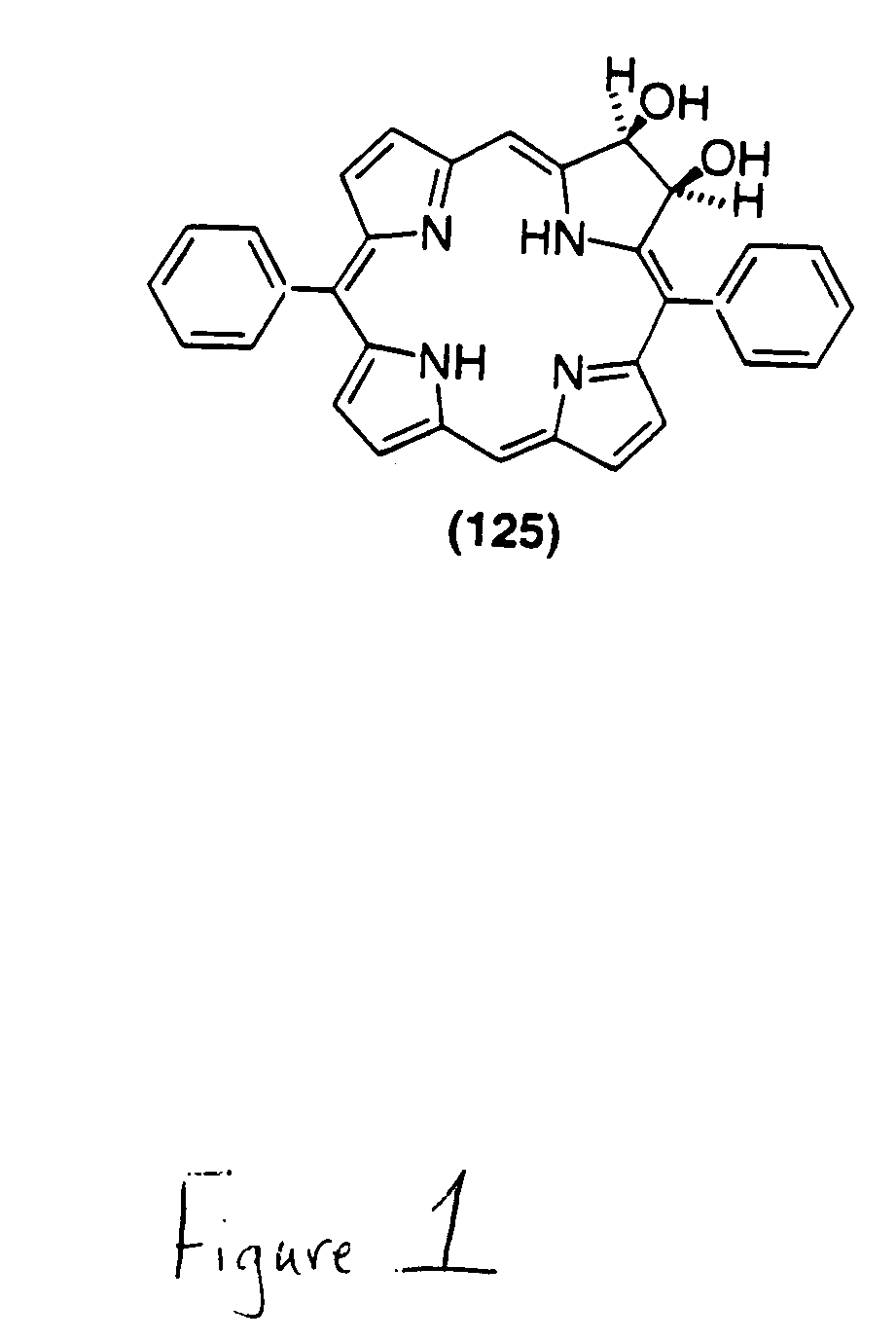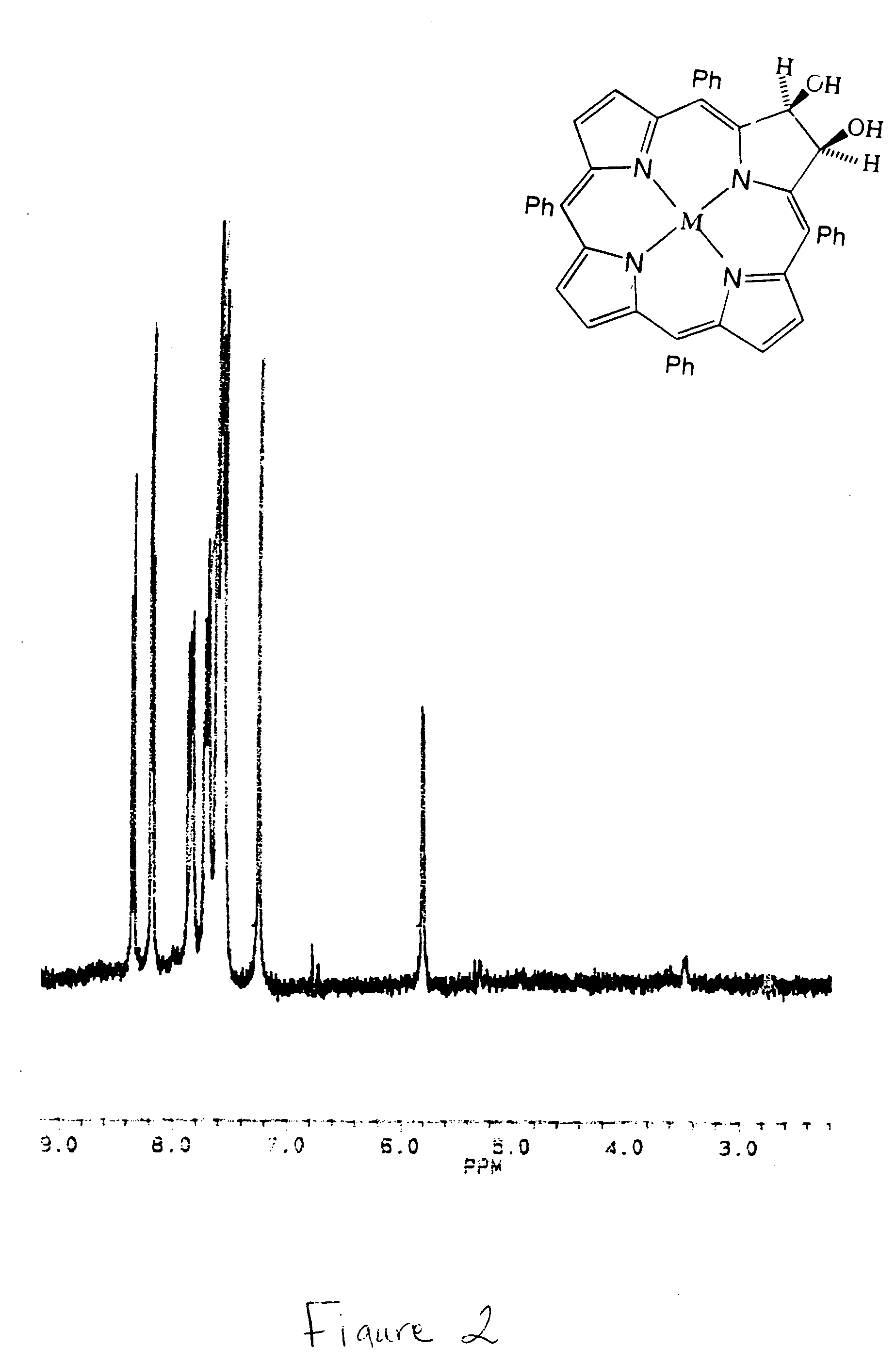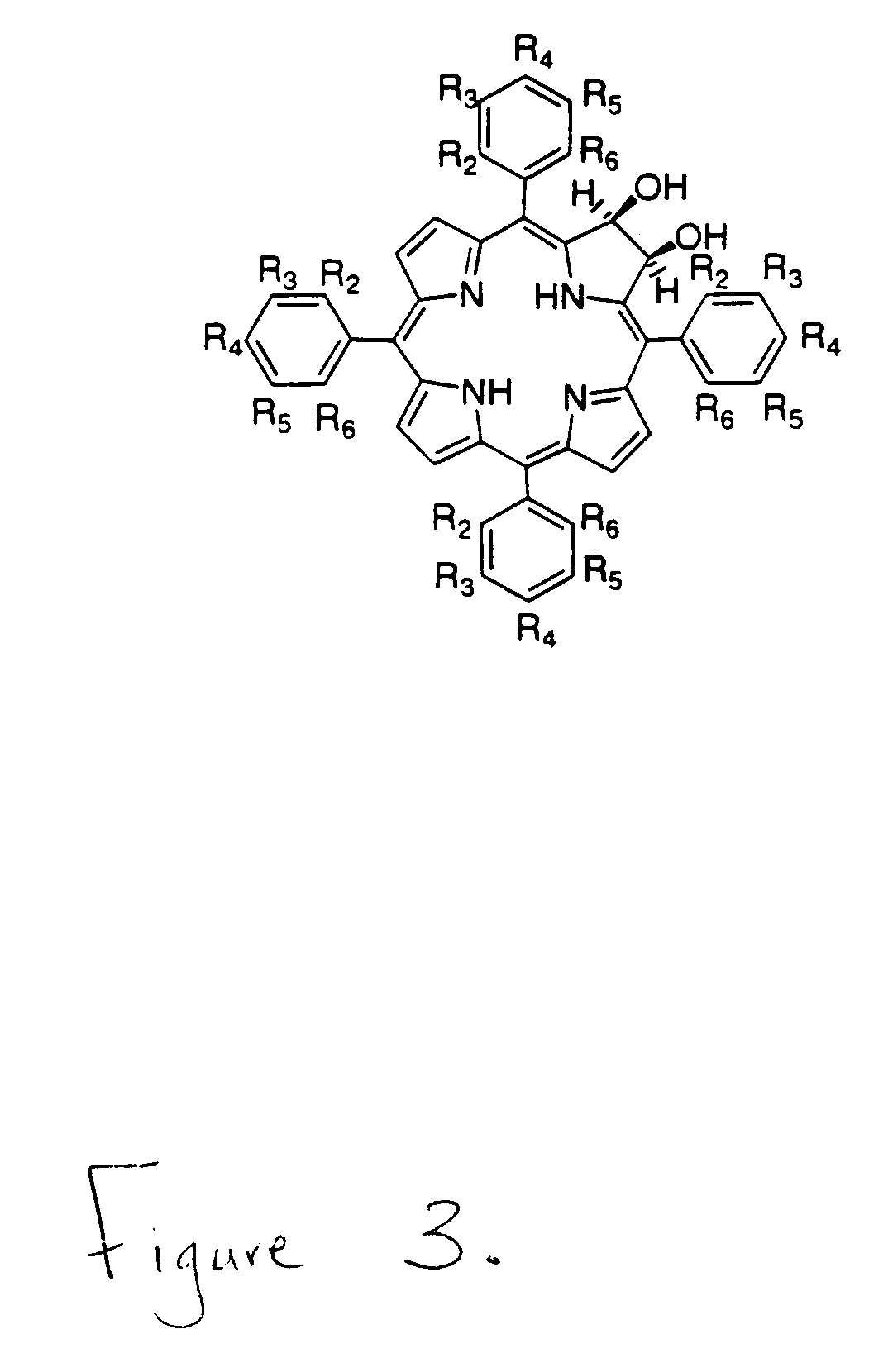Beta,beta'-dihydroxy meso-substituted chlorins, isobacteriochlorins, and bacteriochlorins
a technology of dihydroxy meso-substituted chlorins and beta-dihydroxy meso-substituted chlorins, which is applied in the field of improved dihydroxy chlorins, bacteriochlorins or isobacteriochlorin compounds, can solve the problems of increasing complexity and drastically affecting the rate and amount of drug taken up by cells, and achieves improved reaction time, increased catalysis, and improved osmium tetrox
- Summary
- Abstract
- Description
- Claims
- Application Information
AI Technical Summary
Benefits of technology
Problems solved by technology
Method used
Image
Examples
example 1
[0109]The tested compounds (see Tables 1–4 above) were dissolved in DMSO with the exception of T(p-SO3H)PC(OH)2 (123) which was dissolved in water. The solubility of the compounds was tested by placing the drug (1 mg) in 1 mL of DMSO and then spinning at 10000 rpm for 10 minutes and checking for pellet formation. The concentration of the compounds that formed a pellet was decreased from 1 mg / mL to 0.5 mg / mL DMSO and retested to show an absence of pellet.
[0110]Phototoxicity was determined with L11210 cells in the presence of the compound as follows: the L1210 cells were exposed to varying concentrations of the compounds in 96-well microtiter plates for one hour at 37° C. and 5% CO2. No fetal calf serum (FCS) was added at this time. The plate was then illuminated for one hour after which a 10% aqueous FCS solution was added to the wells. The plates were then returned to the CO2 incubator overnight. After incubation, the cells were assayed for viability using the MTT ...
example 2
General Chlorin Synthesis
[0112]Tetraphenylporphyrin (1 g, 1.63 mmol) was dissolved in a solution of 210% pyridine in reagent grade chloroform. The volume of solvent used was the minimum amount required to dissolve the particular porphyrin being used and ranged from 0.25 to 1 mL / mg. Osmium tetraoxide (450 mg, 1.1 eq) was added to the solution and reaction stirred at room temperature in the dark. The reaction progress was monitored by TLC or UV-Visible spectroscopy until no further reaction was observed (35 days). The reaction was then purged with hydrogen sulfide gas for 10 minutes, and then purged with air until the solvent had evaporated. The solid was then dissolved in a 10% MeOH:CHCl3 solution and filtered. The filtrate was evaporated to dryness and chromatographed (silica, 5% MeOH:CHCl3) to yield the analogous diol chlorin in 40–60% yield.
example 3
Preparation of compound N-Methyl-5,10,15–20-tetraphenylporphyrin (compound 31); see Khosopour, R.; Hambright, P. J. Chem. Soc., Chem. Comm. 1972, 13
[0113]Tetraphenylporphyrin (50 mg, 0.08 mmol) was dissolved in glacial acetic acid (5 mL), and m-xylene (85 mL). Methyl iodide (10 mL) was added to the solution. The mixture was refluxed for 30 hours after which the solvent was removed in vacuo. The remaining solids were dissolved in benzene (25 mL) and dimethylsulfate (0.5 mL) was added. The mixture was refluxed for 45 minutes, cooled to room temperature and neutralized with solid sodium carbonate. The reaction was filtered, and the solvent evaporated to dryness. Column chromatography (acidic alumina; 5% MeOH:CH2Cl2) gave (131) in 5% yield.
PUM
| Property | Measurement | Unit |
|---|---|---|
| Length | aaaaa | aaaaa |
| Length | aaaaa | aaaaa |
| Length | aaaaa | aaaaa |
Abstract
Description
Claims
Application Information
 Login to View More
Login to View More - R&D
- Intellectual Property
- Life Sciences
- Materials
- Tech Scout
- Unparalleled Data Quality
- Higher Quality Content
- 60% Fewer Hallucinations
Browse by: Latest US Patents, China's latest patents, Technical Efficacy Thesaurus, Application Domain, Technology Topic, Popular Technical Reports.
© 2025 PatSnap. All rights reserved.Legal|Privacy policy|Modern Slavery Act Transparency Statement|Sitemap|About US| Contact US: help@patsnap.com



